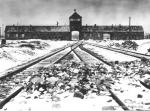Shock Report: The Life of European Jews in Hitler's Time *
The Mission
Imagine: It is January 1933. Adolf Hitler has been appointed Chancellor of Germany. A few months later, Hitler opens the first concentration camp, Dachau, to imprison all those branded as "enemies of the people." He then enforces the boycott of Jewish shops, bans Jews from teaching in universities or working in the public service. It will take only two years for the Nazi government to finally strip all German Jews of their citizenship with the passing of the controversial Nuremberg Laws.
Nazi Germany took advantage of the political instability in Europe to extend its territorial ambitions. In March 1938, it annexed neighbouring Austria. In October 1938, with the approval of Britain and France, the Germans invaded the Czechoslovak part of the Sudetenland. Five months later, Germany annexed the Czech provinces of Bohemia and Moravia, including the Czech capital, Prague.
Bolstered by powerful propaganda with racist and anti-Semitic ideology, Germany and its neighbouring countries became the scene of one of the darkest periods in the history of the twentieth century: the segregation and systematic killing of European Jews (later known as the “Holocaust” or “Shoah”).
This activity aims to teach you about the lives of Jews in Nazi Germany, and to put these lives in historical perspective. It seeks to understand how the ghettos and the camps were a manifestation of Nazi ideology.
As a Canadian reporter in this tumultuous period of world history, you have been mandated to go covertly to Eastern Europe to write a secret story about the life of Jews in the ghettos and camps established by the Nazis.
What were the living conditions of European Jews under the Nazi regime?
The purpose of your mission is to use historical sources and the provided learning tools to study the living conditions of Jews in Europe in the 1930s and 1940s.
To achieve your mission you will have to imagine yourself in this period of world history and adopt the historical perspective of a Canadian journalist located in Eastern Europe. To learn more about your work, accept the mission and see the "Activities" section.
* This lesson is developed with the support of Azrieli Foundation of Canada. Unless otherwise indicated, all resources presented are taken from the collection of the Azrieli Foundation. Their use outside of the Virtual Historian Site is subject to property rights. Working papers on historical thinking are drawn from the Project historical thinking.
